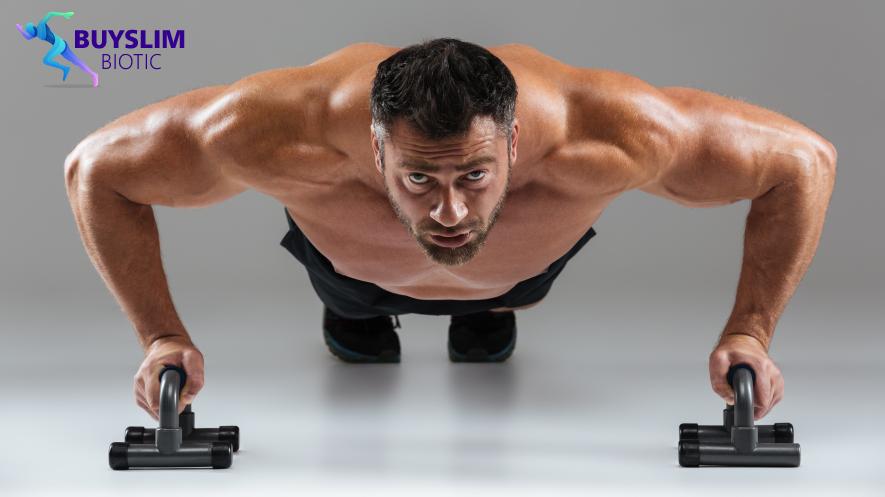Empower your fitness journey with our body strength workouts. Build muscle, enhance endurance, and improve overall health with routines designed for all levels. Achieve your strength goals with our effective and personalized workout plans
Are you prepared to take the first steps toward developing a stronger, more muscular upper body? Strength training is essential to a comprehensive fitness regimen, and an upper-body strength workout is a great place to start. We’ll walk you through the procedures and methods in this tutorial.
Getting Acquainted with Upper Body Strength Training
To embark on your upper body strength journey, it’s crucial to understand the basics. This section provides you with the foundational knowledge you need.
Understanding Upper Body Strength
Before you start lifting weights, it’s important to grasp the concept of upper body strength. This refers to the ability of your chest, shoulders, arms, and back muscles to exert force and overcome resistance. Developing upper body strength can improve your daily life, enhance athletic performance, and boost your overall health.

Benefits of Upper Body Strength Workouts
- Enhanced Muscle Definition: Upper body workouts help sculpt and tone your chest, shoulders, and arms, giving you a chiseled appearance.
- Increased Functional Strength: A stronger upper body makes daily tasks like lifting, carrying, and pushing easier.
- Improved Posture: Strong back and shoulder muscles can correct poor posture and reduce the risk of back pain.
- Boosted Metabolism: Muscle burns more calories at rest, contributing to weight management.
- Elevated Confidence: Achieving upper body strength goals can boost self-esteem and confidence.
Setting Your Goals
The first step is setting clear, achievable goals. Are you looking to build muscle, increase endurance, or simply tone your upper body? Having specific goals will guide your workout plan.
When you embark on your journey of upper body strength training, it’s essential to start with a clear understanding of what you want to achieve. Setting specific and realistic goals not only provides direction to your workouts but also helps you stay motivated throughout your fitness journey. Here’s a breakdown of how to set effective goals for your upper body strength training regimen:
1. Define Your Objectives
Begin by defining the overarching objectives you aim to accomplish with your upper body workouts. These objectives could vary widely from person to person and may include:
- Building Muscle Mass: If you’re looking to sculpt your chest, shoulders, and arms, your primary goal might be muscle hypertrophy.
- Increasing Strength: Perhaps you’re more interested in enhancing your functional strength for daily activities or sports performance.
- Toning and Definition: Some individuals aim for a leaner, more defined upper body without significant muscle mass gain.
- Health and Wellness: For others, the goal could simply be improving overall health and well-being.
2. Make Your Goals SMART
Once you’ve established your objectives, turn them into SMART goals:
- Specific: Clearly define what you want to achieve. Instead of a vague goal like “get stronger,” specify that you want to increase your bench press weight by 20 pounds.
- Measurable: Your goals should be quantifiable. You should be able to track your progress and know when you’ve achieved them. For instance, “perform 12 pull-ups in a row” is measurable.
- Achievable: Ensure your goals are realistic and attainable within your current fitness level and timeframe.
- Relevant: Your goals should align with your overall fitness aspirations and your upper body strength training program.
- Time-Bound: Set a target date for when you want to achieve your goals. This adds a sense of urgency and helps you stay accountable.
3. Long-Term vs. Short-Term Goals
It’s beneficial to distinguish between long-term and short-term goals. Long-term goals are your ultimate objectives, such as gaining 15 pounds of muscle in a year. Short-term goals are stepping stones that lead you toward your long-term goals, like adding 5 pounds to your bench press in a month. Short-term goals provide a sense of achievement and motivation as you make progress.
4. Document Your Goals
Write down your goals in a fitness journal or use a smartphone app. Having them in writing makes them more concrete and serves as a constant reminder of what you’re working toward.
5. Consult a Fitness Professional
If you’re unsure about setting realistic goals or the right approach for your upper body strength training, consider consulting a fitness trainer. They can provide expert guidance and help tailor your goals to your unique circumstances.
6. Periodically Review and Adjust
As you progress in your upper body strength training, it’s essential to periodically review your goals. You may need to adjust them based on your evolving capabilities and preferences. Don’t be afraid to modify your goals to keep your fitness journey challenging and engaging.
Choosing the Right Exercises
Your workout routine should consist of exercises targeting different muscle groups. Key exercises include:
- Push-Ups: Great for chest and triceps.
- Pull-Ups: Excellent for your back and biceps.
- Dumbbell Press: Targets your chest and shoulders.
- Bicep Curls: Focuses on your biceps.
- Tricep Dips: Works your triceps effectively.
Creating a Workout Plan
Design a workout plan that includes a variety of exercises, sets, and repetitions. Beginners should start with 2-3 workouts per week and gradually increase intensity.
Proper Form and Technique
Maintaining correct form is vital to prevent injuries. Consult a fitness trainer or watch instructional videos to ensure you’re performing exercises correctly.
Nutrition and Hydration
Fuel your body with a balanced diet rich in lean proteins, whole grains, and vegetables. Staying hydrated is equally important to support muscle growth and recovery.
Rest and Recovery
Give your muscles time to recover between workouts. Overtraining can lead to injuries and hinder progress.
Tracking Your Progress
Keep a workout journal or use fitness apps to monitor your progress. Adjust your routine as you reach your goals.
Conclusion
Starting an upper body strength workout is an exciting journey towards a fitter, healthier you. By understanding the fundamentals, setting goals, and maintaining consistency, you’ll be well on your way to achieving a stronger upper body and enjoying the numerous benefits it brings.
Recall that Rome wasn’t created in a day. Your greatest allies in your attempt will be perseverance and determination. Put on your exercise shoes, grab some weights, and start working out your upper body strength now.




